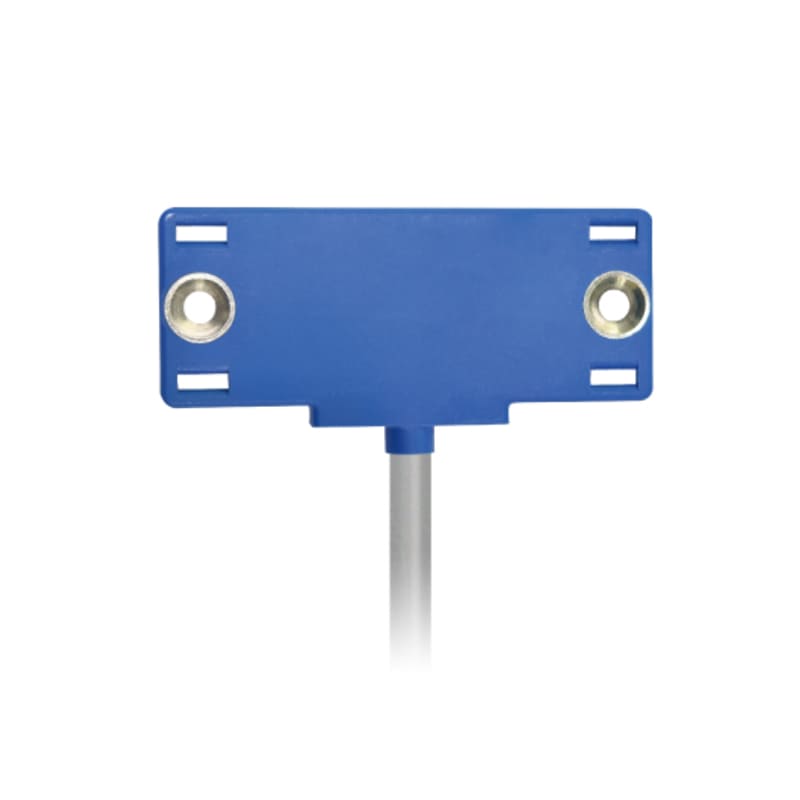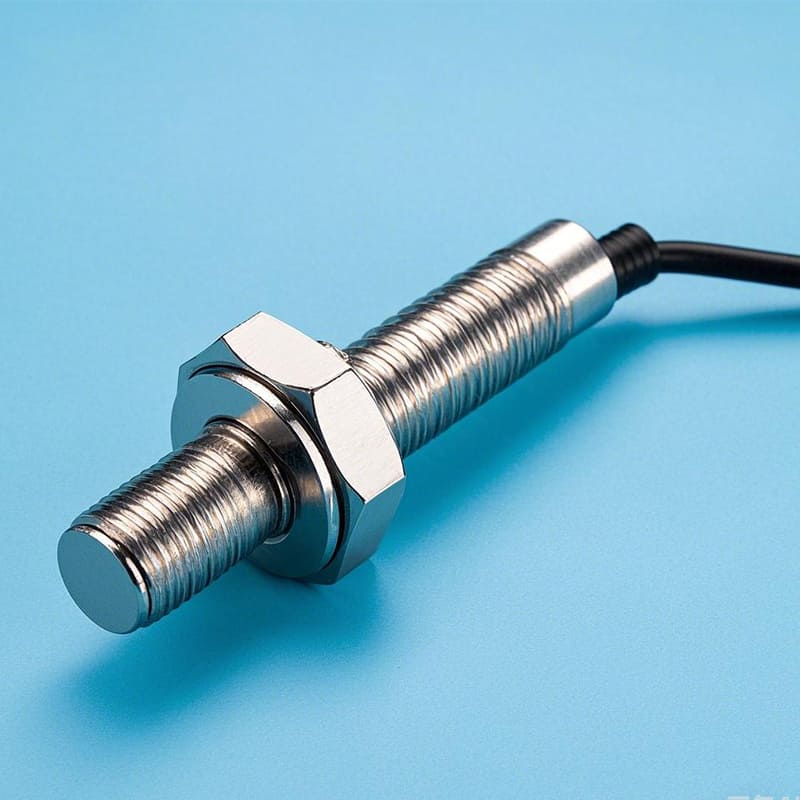Advantages of Bedook Proximity Switch with TEACH-in

In the era of rapid technological development today, sensors play a crucial role in numerous fields. Bedook Proximity Switch with TEACH-in stands out in the field of sensors with its unique self-learning advantage, providing efficient and precise solutions for many application scenarios such as industrial automation and intelligent detection. This article will comprehensively and deeply introduce Bedook Proximity Switch with TEACH-in, including its basic situation, outstanding features, advantages over ordinary sensors, and wide range of application fields.
Introduction of Bedook Proximity Switch with TEACH-in
Bedook Proximity Switch with TEACH-in is rectangular (50×22×5), and it has rich models, including 8 selectable models such as NPN NO/NPN NC/PNP NO/PNP NC, with DC 4-wire system.
This displacement sensor can be fixed by 2 bolts, or it can also be fixed through the 4 small holes around using custom card slots or cable ties. Multiple fixing methods enable the sensor to adapt well to the installation space and ensure its normal operation.
The detection distance of Bedook Proximity Switch with TEACH-in is 5mm and 10mm. Non-flush installation can provide a longer detection distance, suitable for applications with higher requirements for the detection range.
Features of Bedook Proximity Switch with TEACH-in
(1) High switching frequency
This capacitive sensor with teaching function has a high switching frequency of 100Hz. This feature enables it to respond quickly to changes in the detected object. On food packaging production lines or automated assembly lines, hundreds of products/parts may pass through the detection area of the sensor per minute. The high switching frequency of the Bedook sensor can accurately capture the position and status of each product and determine whether the parts are in place, thereby ensuring the smooth progress of the assembly operation and improving the production efficiency of the entire production line.
(2) Wide working voltage range
The working voltage range is 10 – 30VDC (±10%). This wide voltage range design enables the sensor to adapt to different power supply environments. In some industrial sites, due to the large number of equipment, the power supply voltage may have certain fluctuations. Bedook Proximity Switch with TEACH-in can work stably within the voltage range of 10 – 30V, avoiding the problems of sensor failure or inaccurate detection caused by voltage fluctuations, and reducing the complexity and cost of the system.
(3) Low power consumption
No-load current ≤ 15mA, load current ≤ 150mA. Low power consumption is an important feature of Bedook Proximity Switch with TEACH-in. In today’s increasingly tense energy situation, low-power consumption devices can not only reduce operating costs but also conform to the concept of environmental protection and sustainable development. In some wireless sensor network applications powered by batteries, such as in warehouse inventory monitoring systems, sensors need to work for a long time. The low power consumption of the Bedook sensor can greatly extend the battery life, reduce the frequency of battery replacement, thereby reducing maintenance costs and workload.
(4) High repeatability accuracy
Repeatability accuracy ≤ (±5.0%), and switch protection includes short circuit protection, polarity protection, and overload protection. High-precision detection results are the key to ensuring production quality and system reliability. In the manufacturing process of electronic components, high-precision sensors are required for the detection of parameters such as the size and position of components. The high repeatability accuracy of the Bedook sensor can ensure the consistency of each detection result, thereby ensuring the stability of product quality.
(5) Self-learning function
This is the most distinctive feature of Bedook Proximity Switch with TEACH-in. Through the self-learning function, the sensor can automatically adapt to different detection objects and environments. In the material sorting system, when the material, shape or size of the sorting object changes, the sensor can re-adjust the detection parameters through the self-learning function to accurately identify and sort different materials.
In industrial production, the material and shape of materials may change. For example, in automotive parts manufacturing factories or in the fields of logistics and warehousing, products of different batches may differ in material or shape. The self-learning function of Bedook Proximity Switch with TEACH-in allows it to adjust the detection parameters in the face of these changes. When new parts enter the production line, the sensor can quickly adapt to its capacitive characteristics through self-learning, accurately detect the position, quantity and other information of the parts, ensure the continuity and accuracy of production, and avoid production delays caused by replacing or recalibrating the sensor.
(6) Multiple output indications and environmental adaptability
The action indicator lights have multiple indication methods such as green (normally open), yellow (normally closed), and output, which can visually display the working status of the sensor. During equipment debugging and daily operation, operators can quickly judge whether the sensor is working normally and the situation of the detected object by observing the status of the indicator light.
The environmental temperature range is – 25 – 70°C, and the protection level is IP67. This wide temperature range and high protection level enable the sensor to work normally, continuously and reliably under harsh working conditions such as high temperature, low temperature, much dust and high humidity.
Advantages of Bedook Proximity Switch with TEACH-in compared with ordinary sensors
(1) More advanced detection principle
Most ordinary sensors adopt relatively single detection principles. For example, inductive sensors have a good detection effect on metal objects, but their detection ability for non-metal objects is limited. While Bedook Proximity Switch with TEACH-in detects based on the principle of capacitance change and can detect a variety of materials, including plastics, liquids, wood, etc.
(2) Superior performance
Ordinary sensors often have certain limitations in detection accuracy, response speed and stability. For example, some low-cost ordinary photoelectric sensors may have misjudgment phenomena in strong light environments, and their detection accuracy will also be affected by the environmental temperature and humidity. In contrast, the characteristics such as high accuracy, high switching frequency and wide working voltage range of Bedook Proximity Switch with TEACH-in enable it to maintain stable and accurate detection performance in various complex environments.
(3) Strong environmental adaptability
The working ability of ordinary sensors in harsh environments is often weak. For example, in high-temperature and high-humidity environments, some ordinary proximity sensors may experience performance degradation or even damage. While Bedook Proximity Switch with TEACH-in can work normally in the wide temperature range of – 25 – 70°C and high humidity environments, and its IP67 protection level enables it to resist the invasion of dust and water.
(4) Self-learning advantage
Ordinary sensors usually do not have a self-learning function, and their detection parameters are fixed at the factory. In practical applications, if the detection object or environment changes, ordinary sensors cannot automatically adjust the detection strategy and often require manual recalibration or sensor replacement.
The self-learning function of Bedook Proximity Switch with TEACH-in gives it a high degree of intelligence. In intelligent logistics warehouses, when the types and stacking methods of goods in the warehouse change, the sensor can automatically identify the new characteristics of the goods through the self-learning function, optimize the detection algorithm, accurately detect the position and quantity of the goods, and realize intelligent warehouse management. This intelligent self-learning ability not only improves the use efficiency of the sensor but also reduces the labor maintenance cost.
Application fields of Bedook Proximity Switch with TEACH-in
Material detection on the production line
On the automotive parts production line, Bedook Proximity Switch with TEACH-in can be used to detect the position and posture of various parts. For example, during the processing of engine blocks, the sensor can detect the position of the blocks on the conveyor belt to ensure that they accurately enter the processing station. Since the material of engine blocks is mostly metal and their surfaces may have oil stains and other conditions, the capacitance detection principle of the Bedook sensor is not affected by these factors and can accurately detect the presence of the blocks. At the same time, its high switching frequency can meet the high-speed operation requirements of the production line and ensure that each block can be detected in time.
Part positioning during assembly
In the assembly process of electronic products, such as the assembly of mobile phone mainboards, precise positioning of tiny electronic components is required. Bedook Proximity Switch with TEACH-in can adapt to electronic components of different shapes and materials through the self-learning function and accurately detect whether the components are in place. For example, for small components such as capacitors and resistors on the mobile phone mainboard, the sensor can ensure the correct installation position of the components and improve the assembly quality and efficiency by utilizing its high precision and stability in a complex electromagnetic environment.
Automated packaging systems
In the automated packaging systems of industries such as food and medicine, sensors need to detect the status of packaging materials and products. Bedook Proximity Switch with TEACH-in can detect plastic packaging, carton packaging and the products in the packaging. For example, in the medicine packaging process, the sensor can detect the in-place situation of the medicine box and the quantity and position of the medicine in the medicine box. Its self-learning function can adapt to medicine boxes and medicines of different specifications to ensure the accuracy and efficiency of the packaging process.
Goods sorting in logistics
In the goods sorting system of logistics centers, Bedook Proximity Switch with TEACH-in can sort goods according to their materials, shapes and other characteristics. For example, in the sorting process of express packages, the sensor can distinguish whether the items in the packages are metal products, plastic products or paper products, and sort different types of packages into different areas. Its self-learning function can enable the sensor to still accurately sort when facing the packaging differences of packages from different express companies, improving the sorting efficiency of logistics.
Inventory monitoring in warehousing
In the warehousing system, sensors can be used to monitor the quantity and position of inventory goods. For some liquid goods, such as barrel-packed liquid in chemical raw material warehouses, Bedook Proximity Switch with TEACH-in can monitor the liquid level by detecting the capacitance change between the container wall and the liquid to prevent the liquid from overflowing. At the same time, for solid goods in the warehouse, the sensor can detect the stacking situation of goods on the shelves. When the quantity of goods reduces to a certain extent, a replenishment signal is sent out in time to realize intelligent inventory management.
Bedook Proximity Switch with TEACH-in occupies an important position in today’s sensor market with its advanced self-learning ability, excellent measurement accuracy, significant advantages over ordinary sensors, and wide range of application fields. Whether on the high-speed production lines of industrial automation or in the precise sorting process of intelligent logistics, Bedook Proximity Switch with TEACH-in has demonstrated excellent performance and reliability.
Explore Bedook: Your Trusted Sensor Manufacturer
At Bedook, we specialize in designing, developing, and manufacturing a comprehensive range of proximity sensors and switches. Our extensive product lineup includes:
- Inductive Proximity Sensors
- Capacitive Proximity Sensors
- Photoelectric Sensors
- Ultrasonic Sensors
- Solid State Relays
- Various Accessories
With over 10,000 detailed product variations and a robust R&D team, we take pride in our ability to meet your unique requirements with tailored solutions and reliable performance.
Whether you’re seeking off-the-shelf products or customized designs, Bedook offers the expertise and production capacity to ensure your satisfaction.
Get in Touch Today!
We value your interest in our products and warmly encourage you to send us an inquiry. Let us help you find the perfect sensor solution for your application.
Thank you for considering Bedook—your trusted partner in innovation and quality manufacturing. We look forward to collaborating with you!






